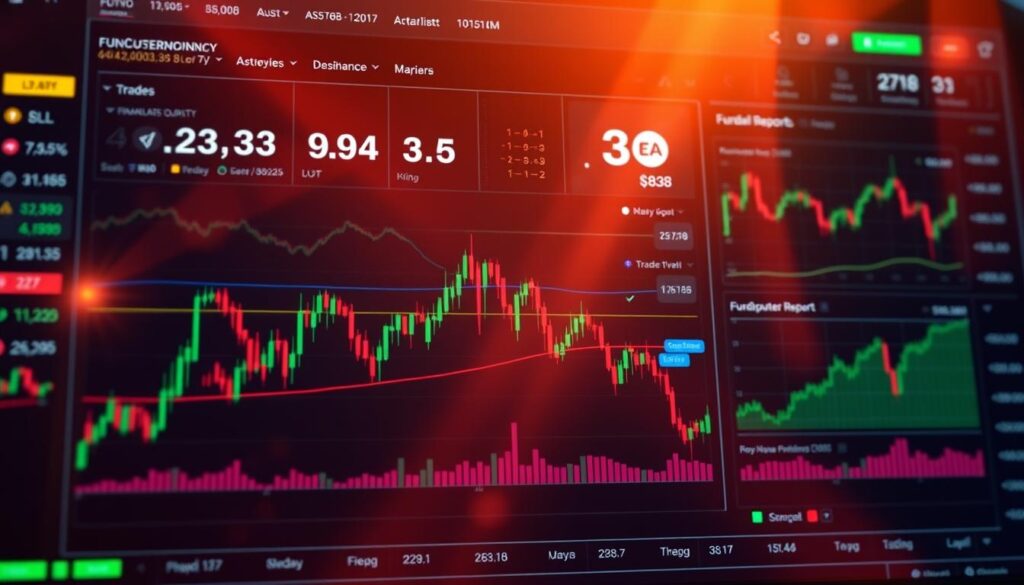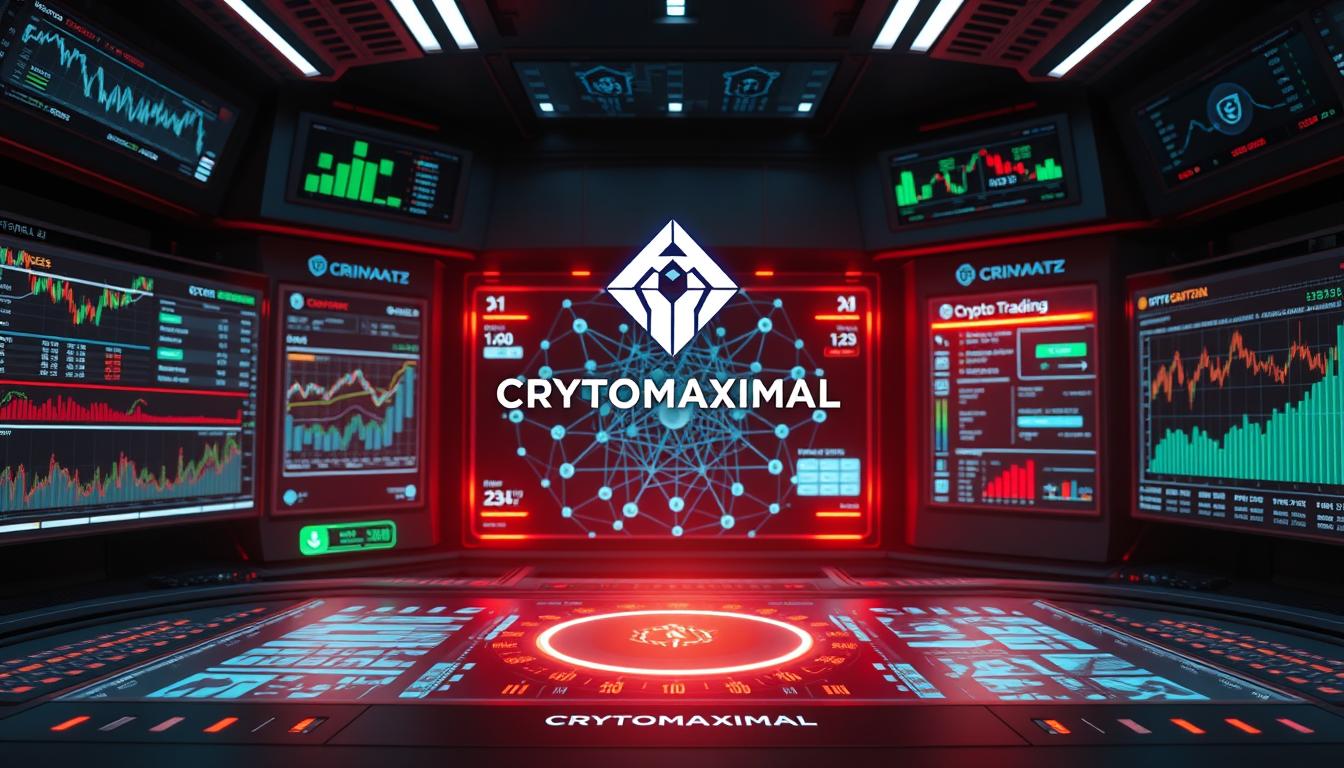Now Reading: Cryptocurrency Fundamental Analysis Checklist for Investors
- 01
Cryptocurrency Fundamental Analysis Checklist for Investors
Cryptocurrency Fundamental Analysis Checklist for Investors

This guide gives U.S. investors a clear, practical workflow to evaluate digital assets by focusing on long-term value, not hype.
Start with vision, tech, team, adoption, and regulation to form a view of sustainability. Then gather on-chain metrics like active addresses, transaction volume, fees, and token distribution to confirm real usage.
Document findings in simple tables and notes. Track exchange inflows and outflows to spot possible selling pressure and improve timing with selective technical and sentiment indicators.
Use credible sources: whitepapers, official docs, on-chain dashboards, and trusted data providers. Combine research with risk controls, custody choices, and security best practices to protect capital.
For a ready template to organize your work, review the ultimate crypto checklist. Subsequent sections will show how to read documents, assess teams, decode tokenomics, and measure on-chain adoption.
What Fundamental Analysis Is in Crypto and Why It Matters Now
A practical assessment begins with project vision, tech execution, and measurable adoption signals. Fundamental analysis in this space is a forward-looking estimate of intrinsic value based on qualitative and quantitative factors like protocol design, team integrity, real use cases, and regulatory trajectory.

FA vs. speculation: grounding decisions in intrinsic value
Unlike short-term speculation, good analysis prioritizes durable drivers over headline narratives. Look for roadmaps that show feasible milestones, developer activity that produces deliverables, and partnerships that enable real users.
Present-market context: volatility, information gaps, and long-term potential
The current market shows extreme price swings and uneven disclosures. That creates information asymmetry that disciplined research can exploit.
- Use on-chain signals—active addresses, fees, and exchange inflows/outflows—to read real usage and potential sell pressure.
- Weigh regulatory news carefully; U.S. investors must factor jurisdictional risk into value estimates.
- Update your view as milestones and data change; patient conviction pays when core fundamentals hold.
For timing and trend context, pair this work with resources on analyzing market trends.
How Fundamental Analysis Differs from Technical Analysis
Charts tell you what the market is doing now; project research explains why it might matter later.
Technical analysis centers on price action, momentum, and liquidity. It uses charts, indicators, and volume to flag short-term risk and potential entry windows.
Fundamental analysis looks at utility, team execution, governance, and network health to estimate intrinsic value and long-term prospects.

When to combine methods for better timing
Use a workflow that starts with a strong FA thesis. Validate usage with on-chain metrics. Then apply TA for entries, exits, and stop placement.
- TA interprets patterns, momentum, and order-book depth for timing.
- FA evaluates product-market fit, developer activity, and regulatory factors.
- Volume spikes or thin depth can confirm or contradict fundamentals around catalysts.
- Market sentiment indicators—funding rates or social heat—may align with strong projects or act as a warning when they diverge.
| Focus | What it shows | Best use |
|---|---|---|
| Technical analysis | Price patterns, momentum, volume | Timing entries/exits and risk limits |
| Fundamental analysis | Team, tech, adoption, regulation | Long-term conviction and thesis building |
| Sentiment | Funding rates, social mentions, narrative heat | Confirm or caution on execution windows |
Aligning TA, FA, and sentiment across different time horizons reduces false signals. Keep a log of signals and outcomes so your process improves with each market cycle.
Building a Research Foundation: Sources, Data, and Documentation
Collect official documentation first so your view of a project rests on verifiable facts and dates. Start by saving whitepapers, roadmaps, audits, GitHub repos, and product docs. Record URLs and timestamps for each item.
Verify clarity and feasibility. Assess whether the whitepaper explains the tech and milestones in plain terms. Note any missing timelines or vague deliverables. Track active repo commits and audit reports for concrete progress.

Data providers and dashboards to bookmark
Use trusted on-chain dashboards to pull historical metrics and trends. Glassnode, CryptoQuant, and IntoTheBlock show active addresses, transaction volume, fees, and holder concentration.
- Build a standardized research template with team, tech, tokenomics, adoption, competitors, and regulatory notes.
- Keep a private spreadsheet or repo to store snapshots, charts, and exchange data like depth and 24‑hour volume.
- Bookmark status pages, incident logs, and product docs to measure operational risk.
Version control matters. Save source links and timestamps so your reports show traceable information. Run a weekly or monthly review cadence to refresh data, refine your analysis, and align thesis with market signals for better decision-making on digital assets.
Decoding Project Documentation: Whitepaper Quality and Red Flags
Start your document review by asking whether the paper clearly defines the problem it solves and who benefits.
High-quality documents explain the solution, the system architecture, and realistic milestones. They give concrete specs and resource estimates rather than marketing language.
Watch for red flags: vague claims, copied text, unclear token roles, and timelines that sound too optimistic. Transparency about team, roadmap, and tokenomics matters for long-term value.

Quick checklist to evaluate clarity and feasibility
- Look for precise problem statements and architecture diagrams.
- Match engineering complexity to team experience and past delivery.
- Compare claimed innovations to existing open-source work for originality.
- Require phased, measurable milestones and public changelogs.
- Demand clear token utility and transparent economic tables.
| Document Element | What to expect | Red flag |
|---|---|---|
| Problem & Solution | Clear scope, examples, target users | Vague goals or broad buzzwords |
| Technical Specs | Architecture, dependencies, implementation notes | No diagrams or only marketing copy |
| Milestones & Timeline | Phased delivery dates and measurable KPIs | Open-ended promises, no dates |
| Tokenomics & Economics | Supply charts, vesting, allocations | Missing tables or opaque emission plans |
| Security & Ops | Audits, bug bounties, incident logs | No audits or hidden security history |
Record your findings in a research log with direct quotes and links. Use that log to support later analysis and to track delivery versus promises.
Evaluating Teams, Governance, and Community Transparency
Begin with the people behind the product: their track record, visibility, and update rhythm. Team credibility hinges on relevant experience, transparent IDs, and steady delivery that shows in commits, releases, and public roadmaps.
Track records and communication matter. Verify founders and core contributors for prior work in blockchain, security, or shipping production systems. Look for regular AMAs, status pages, and quick incident disclosures—these show operational maturity to investors and users.
Track records, communication cadence, and open disclosures
Judge cadence by recent GitHub commits, public changelogs, and scheduled updates. Clear token unlock calendars, treasury reports, and audit summaries signal high-quality information flow.
Community health beyond follower counts
Engagement quality beats raw numbers. Meaningful forum threads, dev Q&A, and grant programs show a healthy community and stronger market resilience.
- Investigate leadership for verifiable experience and past product delivery.
- Assess governance: on-chain voting, council models, or multisigs with clear decision paths.
- Scan social media for substance—links to docs and release notes, not only hype.
- Document red flags: anonymous leadership, evasive answers, delayed incident updates, or closed repos.
| Indicator | Positive signal | Red flag |
|---|---|---|
| Team identity | Named leaders with verifiable LinkedIn, past projects | Anonymous founders without clear reason |
| Communication cadence | Frequent updates, AMAs, changelogs, status pages | Irregular or missing updates during incidents |
| Governance | Clear voting rules, multisig custody, documented escalation | No governance model or opaque decision rights |
| Community health | Active developer threads, helpful responses, grants | Large follower counts but low engagement and abusive comments |
Weight team and governance more heavily when the project involves complex tech or custody risks. That emphasis improves your analysis and yields better market insights for long-term decisions.
Tokenomics That Drive Value: Supply, Distribution, and Emissions
Begin with supply mechanics—how and when tokens enter markets determines near‑term risk and long‑term value. Map circulating versus total supply and note cliffs or unlock schedules that could create selling pressure.
Vesting and allocation reveal alignment. Check how allocation splits across team, investors, treasury, ecosystem, and the public. Heavy concentration with short unlocks is a red flag.
- Define circulating vs. total supply and model unlock timing and percent impact.
- Assess distribution for concentration and vesting alignment with long‑term incentives.
- Analyze emission schedules: inflationary rewards, halving events, or deflationary burns and their effect on purchasing power.
Utility and governance create durable demand. Tokens that pay fees, secure the network via staking, act as collateral, or grant voting rights have stronger value support than pure scarcity narratives.
| Mechanic | Positive signal | Risk |
|---|---|---|
| Emission | Clear, slowing schedule | High ongoing inflation |
| Distribution | Broad public & locked treasury | Insider concentration |
| Treasury | Transparent runway | Opaque selling to fund ops |
Integrate tokenomics into sizing and timing: avoid entering before large unlocks unless there are offsetting catalysts. Compare FDV to adoption and revenues to gauge whether value claims are realistic.
Market Capitalization, Liquidity, and Volume: Reading Market Position
A clear view of market position requires pairing capitalization with liquidity and recent volume trends. Market capitalization equals price times circulating supply and signals relative size and market role.
Market cap tiers and what they imply for risk and growth
Large caps tend to show more institutional interest and lower volatility. Mid caps may offer growth with moderate risk. Small caps often carry higher upside and greater drawdowns.
Cap alone can mislead: check distribution, upcoming unlocks, and fully diluted valuation versus real traction.
24-hour volume, depth, and slippage in the current market
Use 24-hour volume to gauge tradability; low volume and thin order books raise slippage and can magnify price movements from modest orders.
- Compare spreads and depth across exchanges to reduce execution costs.
- Monitor inflows/outflows for signs of supply overhangs or tightening float.
- Track volume trends after product milestones—sustained growth often validates adoption.
| Metric | What it shows | Investor action |
|---|---|---|
| Market capitalization | Relative size and institutional access | Adjust position size by tier |
| 24‑hour volume | Current demand and execution risk | Check liquidity before trade |
| Exchange flows | Potential selling or accumulation pressure | Use as timing context |
Record cap and liquidity metrics in your research log and review correlation with Bitcoin to anticipate beta during risk-on/off cycles. Stable liquidity should guide sizing and risk limits for U.S. investors managing digital assets.
On-Chain Metrics for Real Adoption Signals
On-chain signals offer measurable proof that a network is gaining real users and utility. Track these metrics to move from narrative to evidence-driven decisions.
Active addresses, transaction volume, and fees
Active addresses are a quick proxy for user engagement. Rising, sustained trends point to growing network utility.
Transaction volume and fees reveal economic activity and users’ willingness to pay for throughput. Fee spikes can signal congestion or real demand.
NVT and MVRV: valuation and profitability lenses
NVT compares market cap to transaction volume to flag overvaluation when value outpaces usage. MVRV contrasts market value with realized value to show aggregate profitability and potential sell pressure.
Holder concentration and distribution dynamics
Study token distribution to spot whale risk versus healthy decentralization. Watch for balance shifts around unlocks and listings.
- Segment on-chain activity by entities to separate organic users from churn.
- Compare trends with roadmap events to validate causal links to adoption.
- Use dashboards like Glassnode, CryptoQuant, and IntoTheBlock for reliable data and alerts.
| Metric | What it shows | Investor use |
|---|---|---|
| Active addresses | User engagement | Track growth trend |
| NVT | Valuation vs. transaction | Spot over/under valuation |
| MVRV | Holder profitability | Assess sell pressure |
Tip: set alerts for threshold breaches in key metrics so you can rebalance or run deeper analysis when signals diverge from price moves.
Use Cases and Real-World Utility: Separating Hype from Value
Look for measurable evidence that the offering moves beyond demo stages into sustained service. Strong use cases address clear user needs with feasible tech and a path to scale. Map the problem to the project’s technical approach and test whether that design can handle real demand.
Problem fit and scalability
Distinguish prototypes from production systems. Check uptime records, security audits, and visible cohorts of paying or active users. Review scaling plans—L2s, sharding, or app-specific chains—and match those timelines to current growth rates.
Measuring traction: TVL, integrations, and partnerships
Use TVL as one adoption signal for DeFi assets but contextualize it with protocol risk and yield sources. Track integrations with wallets, exchanges, and developer tools that reduce friction.
- Evaluate partnerships by depth: co-development and distribution beat logo-only mentions.
- Assess unit economics—can demand persist without heavy incentives?
- Map total addressable market and regulatory dependencies that could limit rollout.
| Indicator | What it shows | Investor takeaway |
|---|---|---|
| TVL / capital | Trust and economic use | Validate sustainability of yields |
| Integrations | Lower friction for users | Signals easier adoption |
| Partnership depth | Distribution and co-build | Stronger, durable growth |
Competitive Landscape and Network Effects
A clear competitor map reveals where a project can seize market share or will face steep headwinds.
Assess differentiators by category (L1s, L2s, DeFi, infrastructure, gaming). Score performance, security model, tooling, funding, and partnerships. This lets you see which rivals are direct and which are adjacent threats.
Evaluate network effects — liquidity attracts liquidity on exchanges, composability in DeFi multiplies utility, and developer flywheels via grants or SDKs drive long-term growth.
- Map switching costs: bridges, contract portability, and user habits.
- Measure developer momentum: repo activity, hackathons, grants, and SDK maturity.
- Identify moats: protocol standards, entrenched liquidity, unique IP, or aligned governance.
| Factor | Positive signal | Risk |
|---|---|---|
| Developer ecosystem | Active repos, SDKs, grants | Stagnant commits |
| Liquidity | Deep order books, composability | Thin depth, concentrated holders |
| Moat | Standard adoption, UX leadership | Copycats with no innovation |
Model scenarios where incumbents defend with incentives or challengers win on UX and economics. Update the landscape often as new entrants, forks, or regulation reshape the market.
Market Sentiment and Social Signals in Context
Short-term buzz can mask real progress; reading social signals alongside usage data helps avoid costly misreads. Market sentiment often moves ahead of delivery, so treat social heat as a timing layer rather than proof of value.
When sentiment aligns with milestones, prices may follow genuine adoption. When it diverges, expect volatility and false breakouts. Triangulate social chatter with on-chain usage, product releases, and partner traction before changing a thesis.
When sentiment aligns with fundamentals—and when it doesn’t
- Define inputs: funding rates, options skew, narrative velocity, and social media engagement patterns across platforms.
- Validate trends: confirm positive social signals with on-chain growth and timely releases.
- Spot exhaustion: overheated sentiment without adoption upticks can precede drawdowns.
- Use sentiment tactically for entries/exits around a core, evidence-led view.
- Avoid echo chambers: cross-check influencers and disclosures against independent data.
| Signal | What it shows | Investor action |
|---|---|---|
| Social media volume | Narrative velocity | Watch for alignment with product news |
| Funding rates | Leverage bias | Tighten stops on spikes |
| On‑chain growth | User uptake | Favor sizing increases |
Document cases where sentiment and usage diverged to refine your playbook. For U.S. investors, social signals provide useful timing information, but they should not replace careful project review and core research.
Risk, Regulation, and Security Considerations for U.S. Investors
U.S. investors must balance evolving regulation with practical security steps to protect holdings and remain compliant.
Regulatory access differs by venue. CFTC/NFA‑supervised exposure is available via CME through FCMs and via Coinbase Derivatives for eligible accounts. Kraken Futures expands access in some jurisdictions. Availability depends on account type and residency.
KYC/AML, disclosures, and custody models
- Follow KYC/AML rules and keep disclosures accurate for withdrawals and trading.
- Choose custody that matches your comfort: centralized platforms offer convenience; self‑custody with hardware wallets gives control of assets.
- Track tax obligations—report cost basis, fees, staking rewards, and airdrops.
Operational security: 2FA, allow‑lists, and wallet hygiene
Apply strong operational rules: enable 2FA, set withdrawal allow‑lists, restrict API scopes, and rotate keys. Revoke unused approvals on DEXs and segregate hot/cold wallets.
| Area | Action | Why it matters |
|---|---|---|
| Platform access | Use regulated venues where possible | Reduces compliance and counterparty risk |
| Operational security | 2FA, hardware wallets, key rotation | Prevents account takeover |
| Risk controls | Position sizing, venue diversification | Limits losses from market or platform events |
Monitor status pages and incident history and update your playbook as rules and market conditions change. Robust security processes protect capital as much as good research.
Tools and Platforms to Execute Your Thesis
Select the right trading platforms to turn your thesis into repeatable trades with minimal slippage. Choose venues that match custody preferences, instrument coverage, and cost expectations. Match your strategy to platform strengths before committing capital.
Centralized vs. decentralized venues: access, liquidity, and costs
Centralized exchanges offer deep order books, tight spreads, and convenient fiat rails. They suit high-frequency or large-size trading where execution and liquidity matter most.
Decentralized venues provide self-custody and on-chain settlement. Expect higher UX overhead, wallet flows, and occasional gas costs when using on-chain perps or options.
Derivatives platforms by use case
Match venue to instrument. For global perpetuals, consider Binance Futures, OKX, or Bybit. For BTC/ETH options, Deribit leads in depth. U.S.-regulated access comes from CME and Coinbase Derivatives.
For on-chain products look at dYdX for perps and Aevo for on-chain options. Kraken Futures and Bitget serve niche needs like compliance-minded access or alt perps with copy trading.
Selection factors: liquidity, security, product coverage, fees, UX, and support. Confirm eligibility and KYC rules before onboarding. Apply security controls: 2FA, withdrawal allow-lists, restricted API scopes, and regular key rotation to protect assets and limit operational risk for investors.
| Platform | Best use | Key strength | Consideration |
|---|---|---|---|
| Binance/OKX/Bybit | Global perps | Deep liquidity, low spreads | Geographic restrictions, KYC |
| Deribit | BTC/ETH options | Options depth and pricing | Limited spot services |
| CME / Coinbase Derivatives | U.S.-regulated derivatives | Compliance and institutional access | Fewer alt products, higher fees |
| dYdX / Aevo | On-chain perps & options | Self-custody, transparent settlement | Wallet workflows, gas and UX overhead |
Keep a venue comparison sheet tied to your thesis and update it as market conditions and product lines change. Use that living document to guide execution, fee forecasts, and platform risk reviews as part of your ongoing analysis.
Step-by-Step: Conducting a Crypto Fundamental Analysis
Create a concise, repeatable workflow that turns verifiable sources and on‑chain feeds into an objective investment thesis. Keep files dated and link every claim to a source.
- Gather authoritative data: whitepapers, audits, repos, roadmaps, and dashboards into a standard research template.
- Evaluate team & tech: score delivery capacity, security posture, and milestone realism.
- Analyze tokenomics: circulating vs total supply, emissions, vesting, and utility rules.
- Validate adoption: check active addresses, tx volume, fees, NVT, and MVRV for signal strength.
- Benchmark valuation: market cap, FDV, liquidity, and 24‑hour volume vs peers.
- Map competition and network effects to test moat durability.
- Factor regulation, custody, and operational security for U.S. investors.
- Time entries/exits: use TA, funding rates, and order‑book cues to refine price and trading windows.
- Set invalidation points, position sizing, and metric triggers.
- Update the dossier as new data arrives and revisit allocations on set cadence.
Use this workflow to keep decisions data‑driven and to avoid chasing noise in short market swings.
| Metric | Purpose | Action |
|---|---|---|
| Active addresses | User engagement | Track trend; tie to releases |
| NVT / MVRV | Valuation lens | Flag over/under-valuation |
| Market cap & volume | Size & liquidity | Adjust sizing; check slippage |
| Funding rates | Leverage bias | Tighten stops on spikes |
Cryptocurrency Fundamental Analysis Checklist
Begin with a documented source list so every claim links back to an audit, repo, or roadmap. Keep records dated and easy to review.
Project and documentation
Confirm: clear problem/solution, technical specs, audits, and measurable milestones. Save whitepapers, changelogs, and repo snapshots.
Team, governance, and community
Verify named contributors, steady communication cadence, governance rules, and authentic community engagement beyond follower counts.
Tokenomics, supply, and distribution
Map allocations, emission schedule, vesting, circulating vs. total supply, and token utility or governance rights.
Market cap, liquidity, and volume
Record market cap and FDV, check liquidity depth and 24‑hour volume across primary venues.
On-chain metrics and adoption
Track active addresses, transaction volume, fees, NVT, MVRV, and holder concentration trends to validate uptake.
Competition, sentiment, and regulatory risks
Benchmark rivals, monitor narrative velocity, and note U.S. eligibility, disclosures, and jurisdictional constraints.
Execution tools, fees, and security setup
Select CEX/DEX venues by liquidity and costs, confirm KYC/AML rules, and enforce 2FA, allow‑lists, and tight API scopes.
- Define buy/accumulate/avoid gates tied to metrics, milestones, and personal risk tolerance.
| Area | Key item | Investor action |
|---|---|---|
| Docs | Audit & roadmap | Timestamp and archive |
| Token | Vesting & supply | Model unlock impact |
| On‑chain | Active addresses & fees | Set alerts for trend shifts |
| Security | Access controls | Apply 2FA, allow‑lists |
Conclusion
End with a sanity check: do tokenomics, adoption metrics, and platform security support a durable investment case?
Rigorous analysis separates durable value from short‑lived hype. Use on‑chain signals like active addresses, NVT, and MVRV to validate claims. Log audits, roadmaps, and vesting schedules to build conviction and gather insights.
Combine this research with selective timing tools—TA, funding rates, and order‑book cues—then choose execution venues that match your custody and compliance needs (CME, Coinbase Derivatives, dYdX, Deribit). Maintain security hygiene and measured position sizing to protect capital while pursuing growth.
Keep a living research archive and revisit your thesis as market cycles, unlocks, and regulation shift. Use the checklist section as your recurring guide for disciplined decisions on any crypto asset investment.
FAQ
What should I collect first when starting research on a digital asset?
Start with the project’s official documentation: the whitepaper, litepaper, roadmap, and tokenomics section. Verify team bios and GitHub or audit links, then bookmark data sources like CoinMarketCap, CoinGecko, Etherscan (or the chain explorer) and on-chain dashboards such as Glassnode or Dune for ongoing metrics.
How do use cases affect long-term value for a token?
Clear, real-world use cases create persistent demand. Look for problem-solution fit, measurable adoption (TVL, active users, integrations), and scalability. Projects that enable payments, data storage, or programmability with real customers typically show stronger fundamentals than purely speculative ideas.
What token supply metrics matter most?
Focus on circulating versus total supply, vesting schedules, and planned unlocks. High concentration among early holders or large upcoming unlocks can dilute value and increase sell pressure. Also evaluate inflation or deflation mechanics embedded in the protocol.
How should I interpret market capitalization and what it implies about risk?
Market cap gives a rough size ranking. Large-cap projects tend to be more stable with lower upside but less volatility. Small-cap assets can offer higher growth but carry higher execution and liquidity risk. Always cross-check liquidity and order book depth to assess tradability.
Which on-chain metrics are reliable signals of adoption?
Active addresses, daily transaction volume, total value locked (TVL), and fees generated are strong indicators. Complement these with NVT and MVRV ratios to gauge valuation relative to network activity and profitability for holders.
How do I evaluate the team and governance credibility?
Check professional backgrounds, previous projects, and verifiable identities on LinkedIn or GitHub. Review governance models, token-holder voting rights, and public communication cadence. Transparent teams with regular updates and third-party audits score higher on trust.
When should I combine technical and on-chain analysis with project research?
Use fundamental research to form a thesis and technical indicators to time entries and exits. Combine TA for short-term risk control with on-chain signals and sentiment data to validate momentum and avoid buying into frothy tops.
What red flags should I watch for in a whitepaper?
Vague technical details, unrealistic timelines, recycled content from other projects, missing token distribution tables, and lack of security audits are all red flags. A high-quality paper will include architecture diagrams, consensus mechanisms, and measurable milestones.
How important is community health versus follower counts?
Community quality matters more than size. Look for active developer participation, meaningful discussions in forums or Discord, and constructive contributor activity. Fake followers or passive social engagement can mask poor underlying support.
What role do liquidity and volume play in execution risk?
High 24-hour volume and deep order books reduce slippage and make large trades feasible. Thin markets increase the cost of entry and exit and raise the chance of price manipulation. Review exchange listings and pair liquidity before allocating sizable capital.
How do regulatory and security considerations affect U.S. investors?
U.S. investors should assess whether a token might be classified as a security, review KYC/AML requirements on exchanges, and prefer custodial solutions with clear compliance. Also prioritize operational security: hardware wallets, 2FA, allow-lists, and cold storage for large holdings.
Which tools help validate on-chain activity and holder distribution?
Use chain explorers (Etherscan, BscScan), analytics platforms (Nansen, Glassnode, Dune), and token distribution dashboards to track large wallets, staking contracts, and concentration metrics. These tools reveal true holder behavior and potential centralization risks.
How do emissions schedules impact token value over time?
Emission schedules determine new supply entering the market. Aggressive emissions can create persistent selling pressure, while designed scarcity or burn mechanisms can support price. Always model future supply unlocks and their timing relative to demand growth.
What is the best way to benchmark a project’s valuation?
Compare market cap and key metrics (TVL, active users, revenue if any) to direct competitors. Use on-chain ratios like NVT and MVRV, and assess stage-of-development: pre-mainnet projects should be valued differently than live networks with proven traction.
How can social sentiment mislead investors?
Social buzz can amplify momentum and inflate short-term prices without underlying adoption. Track sentiment trends alongside on-chain activity; when sentiment diverges sharply from metrics like transactions or TVL, it often signals speculative excess or hype.
Which exchange type should I use for liquidity and cost efficiency?
Centralized exchanges (Coinbase, Binance) offer deep liquidity and fiat on-ramps but require custody. Decentralized exchanges (Uniswap, SushiSwap) provide permissionless access and composability but can have higher slippage and MEV risks. Choose based on order size, fees, and custody preferences.















